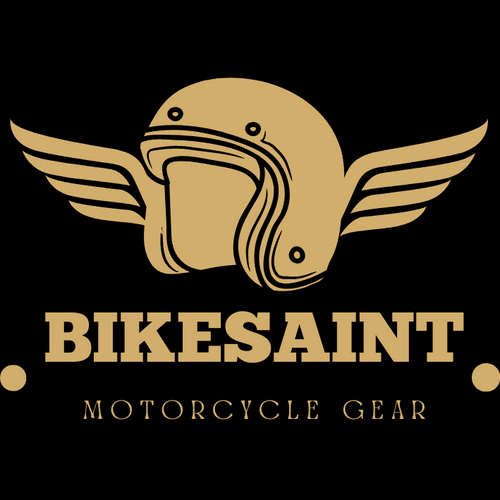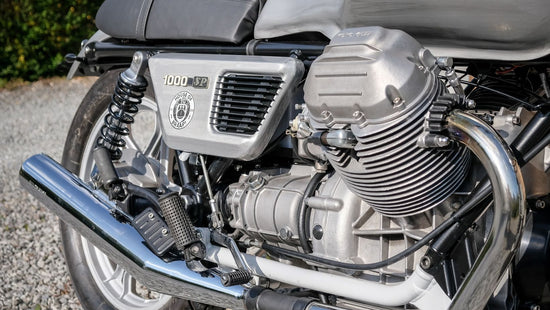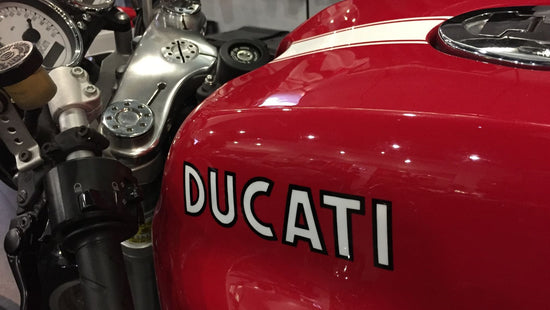

Since 1903, Harley Davidson motorcycles have been setting the standard for the American motorcycle industry. From their iconic design to the rebellious attitude they often embody, Harley Davidson motorcycles have a special place in the hearts of many people. In this article, we'll take a journey through time and explore the history of these amazing machines, from their humble beginnings to the present day. So, let's dive in and discover how Harley Davidson motorcycles became the iconic brand that they are today.
Introduction
Harley Davidson is an American motorcycle manufacturer that was founded in 1903 by William S. Harley and Arthur Davidson in Milwaukee, Wisconsin, where they built their first factory on Chestnut Street. Since then, the company has become the world's largest motorcycle manufacturer, producing motorbikes that are known for their distinctive design, superior performance and powerful sound. The Harley Davidson name has become synonymous with adventure and freedom, and they have been adopted by many subcultures around the world.
The company has a long history of innovation and their motorcycles have evolved over the years to keep up with changing technology. In the early days, Harley Davidson was known for its single-cylinder models, which were the first mass-produced motorcycles in the US. As technology advanced, the company began producing multi-cylinder engines for more power and torque. The first of these was the Sportster model, which was developed in 1957. This model was followed by the iconic Electra Glide, which was released in 1965. Over the years, Harley Davidson has continued to innovate, introducing new models and features to keep their motorcycles up to date with the times.
Harley Davidson has a dedicated fan base, and they don't take their loyalty lightly. The company has a wide range of merchandise and branded apparel, as well as an active community of riders and enthusiasts. In addition, the company sponsors several events and clubs that bring riders together to celebrate their shared love of two-wheeled freedom. Whether you're a long-time Harley fan or just curious about the history and culture behind these iconic motorcycles, there's something for everyone. So, let's take a closer look at the history of Harley Davidson motorcycles and see why they've become so beloved around the world.
The Motorcycle Icon

In the 1930s Harley-Davidson helped establish together with Indian Motorcycles the motorcycle cruiser category. In the 1960s they came up with a heavier and full dressed motorcycle type called tourer, suitable for long rides.
Harley Davidson motorcycles are iconic for a number of reasons. Not only do they have a distinct look and powerful sound, but they also represent a lifestyle. For many people, owning a Harley is about more than just having a motorcycle - it's about being a part of something bigger. Harley Davidson riders are passionate about their motorbikes, and they take pride in being part of a global community of like-minded individuals. In addition, Harley Davidson has a rich racing history, which has made them a beloved brand in the motorcycle racing world.
Harley Davidson motorcycles are also well known for their reliability and performance, although there has been a brief part in the company’s history in the 1980s where they were not on top of their game. The company has a reputation for quality craftsmanship, and their motorbikes are built to last. In addition to their performance, Harley Davidson motorcycles also feature distinctive styling that sets them apart from the competition. Their signature design is instantly recognizable, and it has become a symbol of freedom and adventure. Whether you're a casual rider or an experienced biker, there's no denying the power and appeal of Harley Davidson motorcycles.
History of Harley-Davidson Motorcycles
Early Years
Harley Davidson has a long and storied history, dating all the way back to 1903. The company was founded by William S. Harley and Walter Davidson. Walter Davidson was born in 1876 in Milwaukee, Wisconsin. He was the oldest of four children, and his family was supportive of his passion for machines. At the age of 12, he was already building and riding motorcycles.
In 1901, he joined forces with lifelong friend William Harley and formed the Harley-Davidson Motor Company. Through hard work, dedication, and a lot of know-how, Walter and his team created one of the most beloved motorcycle companies in history.
Walter was the first to test out the Harley-Davidson motorcycles, and he was an excellent rider. He even got the nickname “The Speed King” for his outstanding riding skills. As the company grew, Walter and his partners continued to innovate and develop new models of the iconic motorcycle.
In the early days of the company, Walter did more than just ride motorcycles. He was also responsible for managing the company's finances, helping with design and engineering, and promoting the brand. He was instrumental in the success of Harley-Davidson and is remembered as an innovator and pioneer in the world of motorcycling.
William Harley was born in 1881 in Milwaukee, Wisconsin. He started tinkering with machines at a young age, and would often take things apart to figure out how they worked. This passion and curiosity eventually led him to develop the first prototype of a small, lightweight motorcycle. In 1901, he and his lifelong friend, Walter Davidson, formed the Harley-Davidson Motor Company. From there, William Harley went on to design some of the most iconic motorcycles in history. His brilliant engineering skills and uncompromising attention to detail earned him a place in the annals of motorcycling history. He was a visionary who, along with Walter Davidson, helped create a legacy that continues to this day.
Over the next few decades, Harley Davidson continued to refine their designs and introduce new models, such as the Sportster, which was first released in 1957. This model was followed by the iconic Electra Glide, which was released in 1965. Over the years, Harley Davidson has continued to innovate, introducing new models and features to keep their motorcycles up to date with the times.
WWII and the Post-WWII Revival
During World War II, Harley-Davidson played a crucial role in producing motorcycles for the U.S. military. After the war, the company underwent a major transformation, reviving its motorcycle business and helping to launch the post-war motorcycle revival.
In 1942, Harley-Davidson was producing more than 90,000 motorcycles a year for the U.S. military. This included the iconic WLA model, which was used by American servicemen in Europe and the Pacific. The company had to make drastic changes to their production methods during the war, but still managed to produce the reliable and powerful motorcycles that the military needed.
After the war, Harley-Davidson was left with a large surplus of parts and a need to re-launch their motorcycle business. Harley-Davidson's commitment to quality and style gave the company an edge during the post-war revival. They began to produce civilian versions of the WLA, eventually creating the Sportster in 1957. This was the first of many models that the company would produce over the years. They also began to introduce their signature style and attitude, helping to create the motorcycle culture we know today.
Notable Models

The Knucklehead
The iconic Harley-Davidson Knucklehead was introduced in 1936 and quickly became a classic. This legendary motorbike was the first Harley to feature a recirculating oil system and a full-skirted fender. The engine was an overhead valve design, which made it more reliable and powerful than previous models.
The Sportster
The Harley-Davidson Sportster was released in 1957 and was an instant hit. This motorbike was the first Harley to feature an overhead valve engine and a rubber-mounted frame. It was also the first Harley to have a modern look with a low, sleek silhouette. The Sportster is still in production today and continues to be one of the most popular models.
The Electra Glide
The Electra Glide was released in 1965 and quickly became a classic. This motorbike featured a four-speed transmission, electric start and a full-skirted fender. The Electra Glide was the first Harley to feature a large, comfortable touring bike and paved the way for the touring bikes we know today.
The Fat Boy
The Fat Boy was introduced in 1990 and quickly became one of the most iconic Harley-Davidson models. This motorbike has a distinct look with its wide body, low-slung seat, and fat tires. The Fat Boy is easily recognizable even today and has become an iconic symbol of Harley-Davidson's style and attitude.
Modern Impact
In addition to their iconic motorcycles, Harley Davidson has also ventured into other areas of the motorcycling industry. In the 1990s, they began producing motocross motorbikes, and in the 2000s, they expanded into the scooter market. They have also been involved in the development of electric motorcycles, and they are one of the few manufacturers who have released electric models. This shows the company's commitment to staying ahead of the curve, and it has helped them remain a leader in the motorcycling industry.
Classic Style Revival
In the early 2000s, Harley Davidson underwent a revival, thanks to a renewed interest in the history and culture of the brand. With its iconic designs, powerful engines, and a reputation for quality, Harley-Davidson motorcycles became popular with a new generation of riders. In recent years, Harley-Davidson has continued to grow and expand, introducing new models and features to meet the needs of every kind of rider.
Conclusion

Harley-Davidson has a long and illustrious history. From the first model, the Knucklehead, to the modern touring motorcycles, Harley-Davidson has continued to innovate and refine their designs. The company has played an important role in the post-war motorcycle revival and is an important part of the motorcycling culture we know today.
Harley Davidson's Legacy
Harley-Davidson has been around for over a century and continues to be one of the most iconic names in the motorcycling industry. They have created some of the most iconic motorcycles that remain popular today, including the Knucklehead, the Electra Glide, and the Fat Boy. These classic models are still recognizable today, and they have left an indelible mark on the motorcycling culture.
In addition to their classic models, Harley Davidson has also ventured into the world of electric motorcycles and is one of the few manufacturers to release electric models. This shows how committed they are to staying ahead of the curve and to providing riders with the latest technology and features.
Harley-Davidson has also been part of the post-war motorcycle revival and continues to be one of the most popular brands of motorcycles today. With their iconic designs, powerful engines, and a reputation for quality, Harley-Davidson motorcycles remain popular with a new generation of riders.
Future Outlook
Today, Harley-Davidson is still a leader in the industry, producing a wide range of motorcycles that cater to every type of rider. Despite the challenges they faced, their commitment to excellence and innovation kept them ahead of the pack and ensured their place as one of the most iconic motorcycle brands in the world.
Harley-Davidson continues to be an innovator in the motorcycling industry. With the introduction of their latest electric models, they have shown that they are dedicated to staying ahead of the curve and providing riders with the latest technology and features. They continue to be a leader in the industry and have created a legacy that will last for years to come.
Me personally, I am curious about how the story is going to unfold in the future. I am worried about the company’s recent plans that I read about, that they want to manufacture only electric motorcycles in the future. That is something I cannot imagine would fly with their conservative fan base.
How did Harley-Davidson become the iconic brand it is today?
Harley-Davidson has grown from a humble start-up to one of the most iconic motorcycle brands around the world. Founded in 1903 by William S. Harley and Arthur and Walter Davidson, the small business had fewer than 10 employees and produced just three motorcycles in its first year.
Today, Harley-Davidson has become a global symbol of power and freedom. So how did it go from a small workshop in Milwaukee to a cultural phenomenon?
Part of the reason for Harley-Davidson’s success is its commitment to quality. The company has a legacy of engineering excellence and innovation, with a focus on making reliable, durable, and powerful motorcycles. The motorbikes are also highly customizable, allowing riders to make their Harley their own.
Harley-Davidson has also cultivated a passionate following and an incredible global community. From events like the annual Sturgis Motorcycle Rally in South Dakota to the Harley Owners Group (HOG), the company has built a devoted fan base that has helped spread its iconic image.
Finally, Harley-Davidson has been savvy when it comes to marketing. Its campaigns have featured everything from classic advertisements to celebrity endorsements, and the company has used its iconic logo to create a recognizable brand identity.
Ultimately, the combination of quality craftsmanship, a strong sense of community, and effective marketing has helped Harley-Davidson become the iconic brand it is today.
How has Harley-Davidson's customer base changed over the years?
Harley-Davidson has been around since 1903 and its customer base has changed significantly in the modern years. Initially, Harley-Davidson was seen as a rugged, masculine brand that appealed to the stereotype of a classic American biker. However, over time Harley-Davidson's customer base has become much more diverse. As the brand has become more popular and accessible, it has attracted a broader range of people, from all walks of life. In recent years, Harley-Davidson has done a great job at marketing to women and other minority groups, and its customer base now includes a wide range of different people. The brand has also made an effort to appeal to younger generations, and its customer base now includes people of all ages. Overall, Harley-Davidson's customer base has grown and diversified over the years, and the brand has done a great job of adapting to the changing needs of its customers.
Who founded the Harley-Davidson Motor Company?
The Harley-Davidson Motor Company was founded by William S. Harley and Arthur Davidson in Milwaukee, Wisconsin in 1903. The two had been working together since 1901 to build motorcycles and eventually decided to take their business to the next level. They spent two years designing and building their first motorcycle, a single-cylinder machine that could reach speeds of 30mph. The first Harley-Davidson was sold to the public in 1904 and the company has since grown to become one of the most iconic motorcycle brands in the world.
What type of engine did the first Harley-Davidson motorcycles use?
The first Harley-Davidson motorcycles used a 3-1/8 inch bore and 3-1/2 inch stroke single-cylinder engine. This engine had a displacement of 24.74 cubic inches and produced around 7 horsepower. It was a simple, air-cooled design and is considered the cornerstone of Harley-Davidson's success
What changes did Harley-Davidson make to its motorcycles during World War I?
Harley-Davidson had a major role to play in supplying the US and Allies with motorcycles during World War I. The company developed a number of new models and features to help meet the military’s requirements. The most notable changes included the introduction of a three-speed transmission, a foot-operated gearshift, and an in-line, two-cylinder engine. The motorcycles also featured a new frame design to improve balance and handling, and a specially designed sidecar to carry munitions. Harley-Davidson also adapted some of its previous models to be used as motorcycle ambulances, featuring a sidecar with a stretcher. All of these changes helped the company to become one of the leading suppliers of motorcycles during the war.
What happened to Harley-Davidson after World War II?
After World War II, Harley-Davidson faced several challenges that tested their staying power and commitment to excellence in motorcycle manufacturing. The company had to adapt to a quickly changing post-war economy, and face competition from foreign and domestic manufacturers. In an effort to stay ahead of the curve, they diversified their product line to include motor scooters, and even launched a successful line of lightweight motorcycles. Despite the struggles they faced, Harley-Davidson continued to innovate and remained a leader in the industry. In the 1950s, they introduced a new generation of Big Twin engines, and their products quickly gained popularity with a younger market. In the 1960s, they moved into international markets and experienced strong growth, which they maintained throughout the decades to come.
Did Harley-Davidson ever make bicycles?
It might surprise you, that Harley-Davidson company was also in the bicycle business between 1917 and 1922, producing several bicycle models. Currently the company also offers one bicycle model, which can be yours for about $ 5,000.












